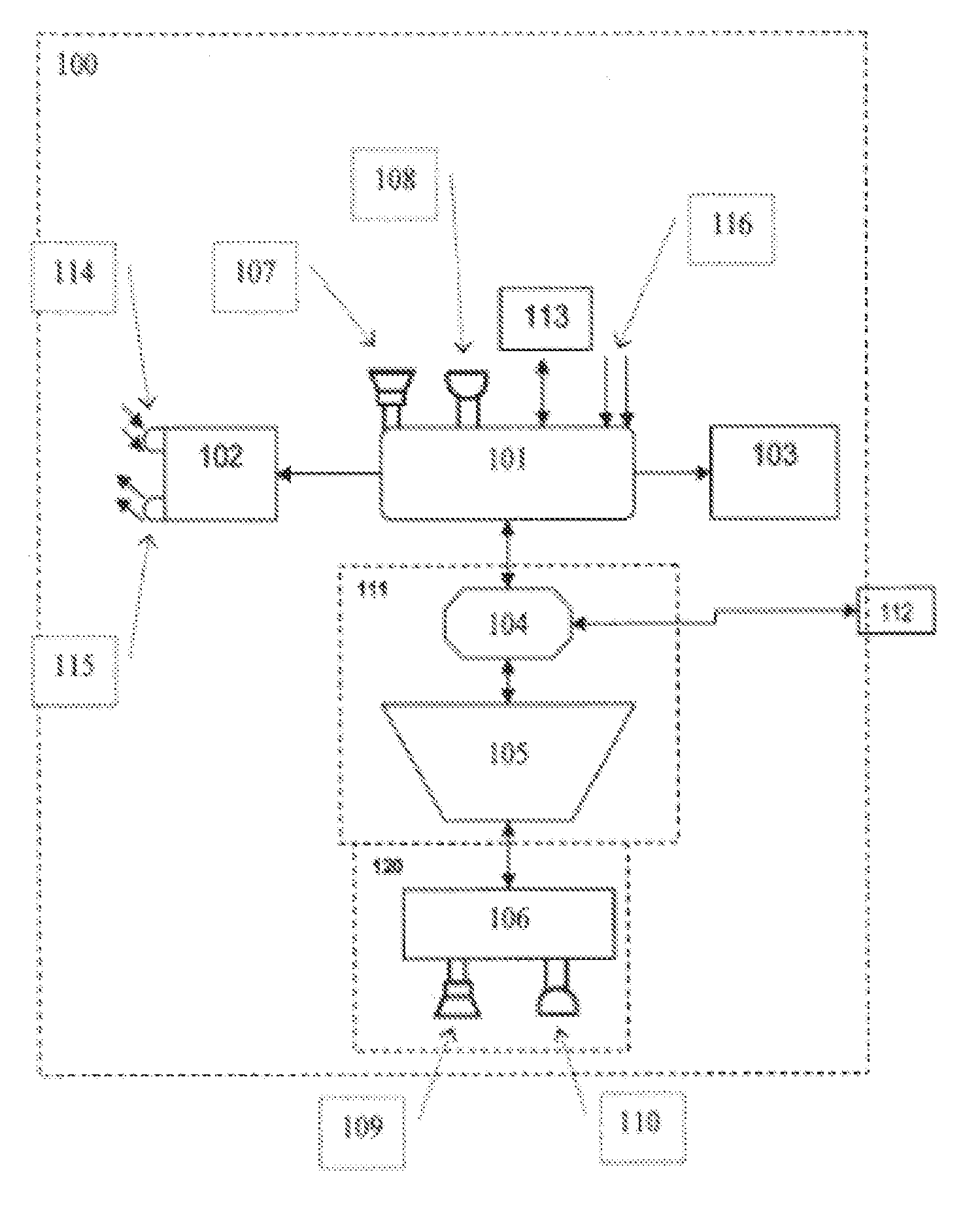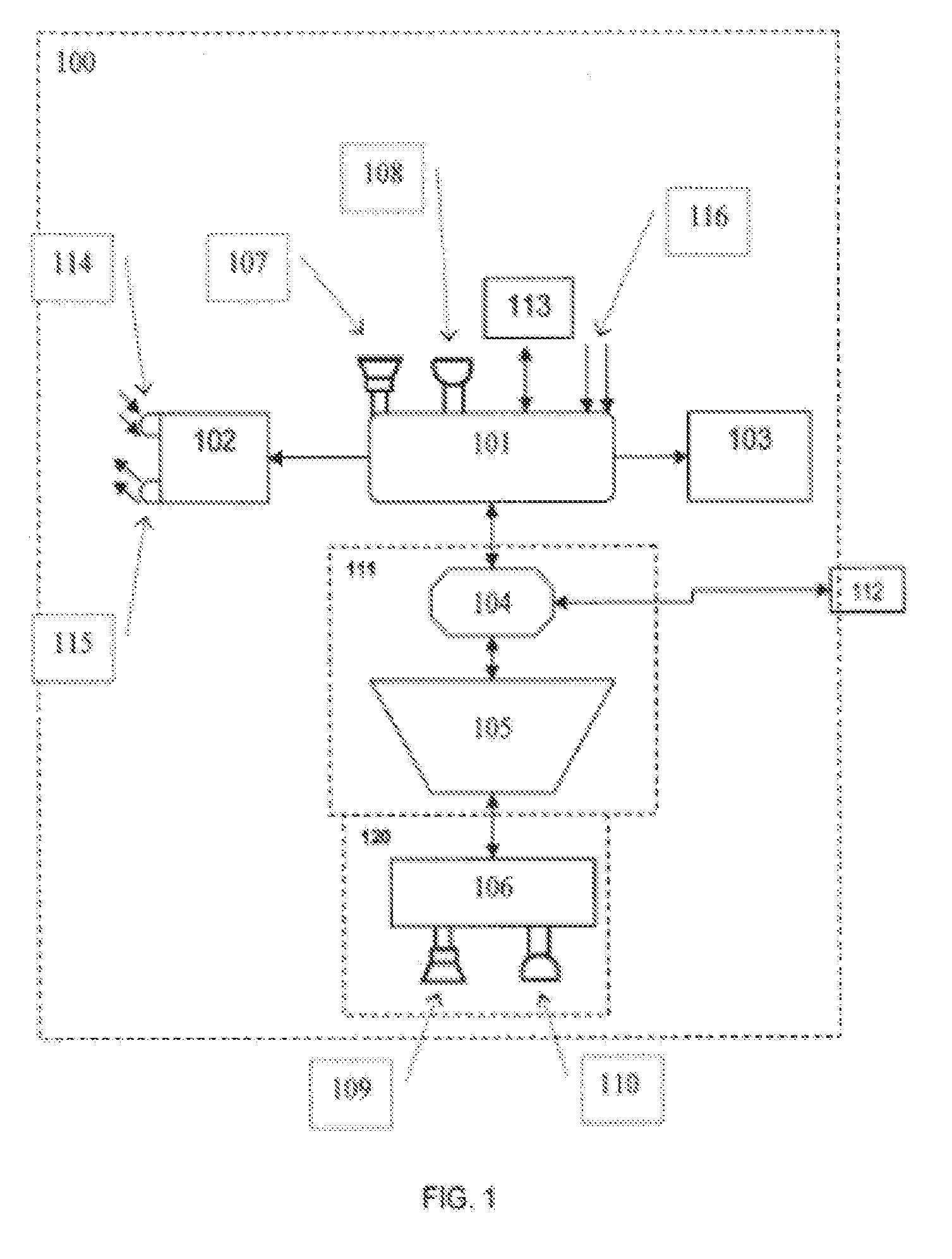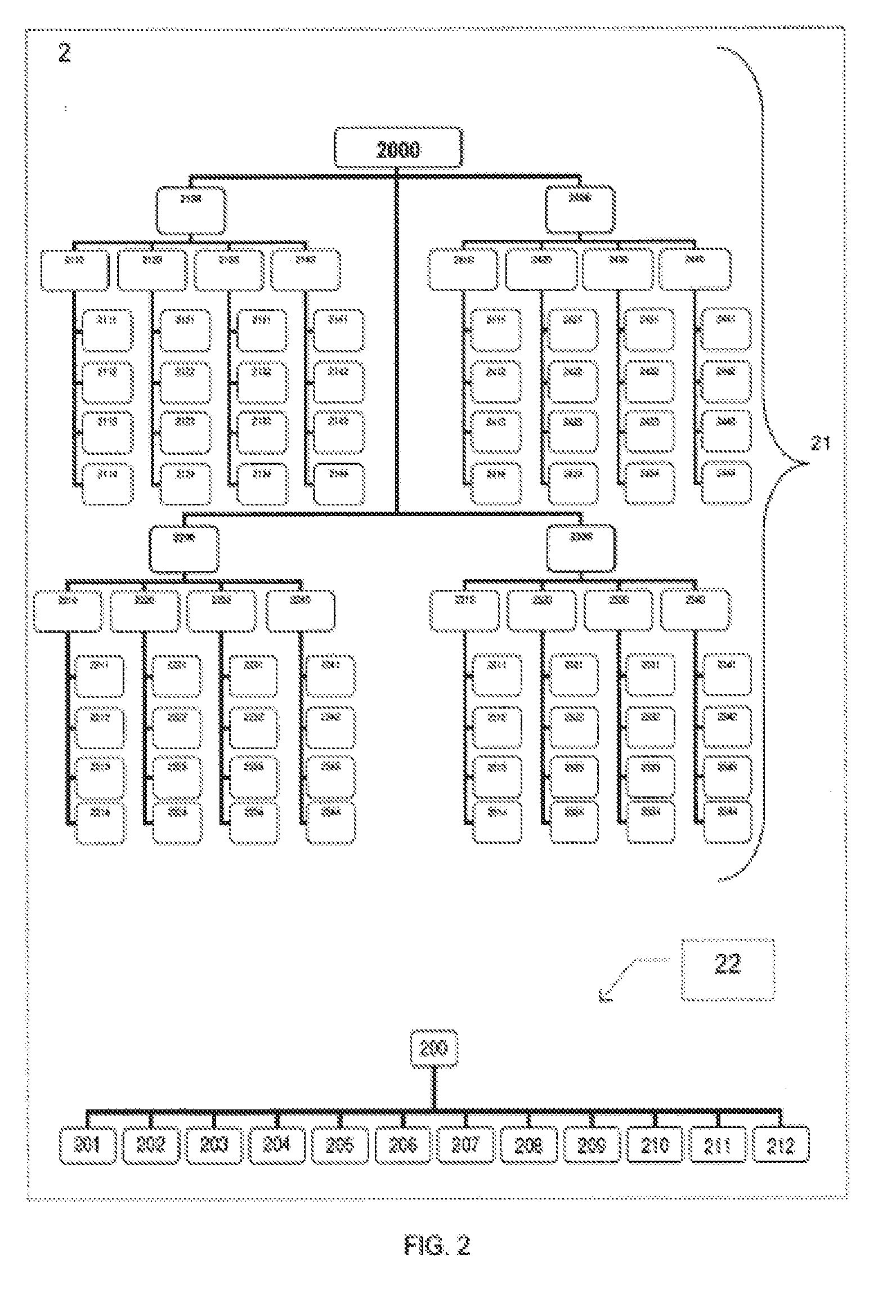Methods and system of voice control
a voice control and voice technology, applied in the field of methods and voice control systems, can solve the problems of high cost of adding an interface, either by rf or other methods, for each operation to be performed by voice, and the computer must be continuously turned
- Summary
- Abstract
- Description
- Claims
- Application Information
AI Technical Summary
Benefits of technology
Problems solved by technology
Method used
Image
Examples
Embodiment Construction
[0017]The following terms are used throughout this description to enable understanding of the same, however, one skilled in the art will appreciate that these terms are not intended, in any way, to limit the scope of the present application.
[0018]Voice order or command: Input digital samples of sound or set of sounds (such as phrases or words) chosen by the user or entered directly from the initial configuration of firmware and which are recorded in a specific location in system memory in order to compare them with audio inputs said by a user to perform operations.
[0019]Operations: Any action taken by the device in response to a given sound input, such as changing of channel, calling by telephone, turning on of some light, sending of a code via the serial communication port, etc.
[0020]The system of the present invention is an electronic device that incorporates all key components for the control of electronic and electrical household devices, such as lighting, telephone, and audio / v...
PUM
 Login to View More
Login to View More Abstract
Description
Claims
Application Information
 Login to View More
Login to View More - R&D
- Intellectual Property
- Life Sciences
- Materials
- Tech Scout
- Unparalleled Data Quality
- Higher Quality Content
- 60% Fewer Hallucinations
Browse by: Latest US Patents, China's latest patents, Technical Efficacy Thesaurus, Application Domain, Technology Topic, Popular Technical Reports.
© 2025 PatSnap. All rights reserved.Legal|Privacy policy|Modern Slavery Act Transparency Statement|Sitemap|About US| Contact US: help@patsnap.com



